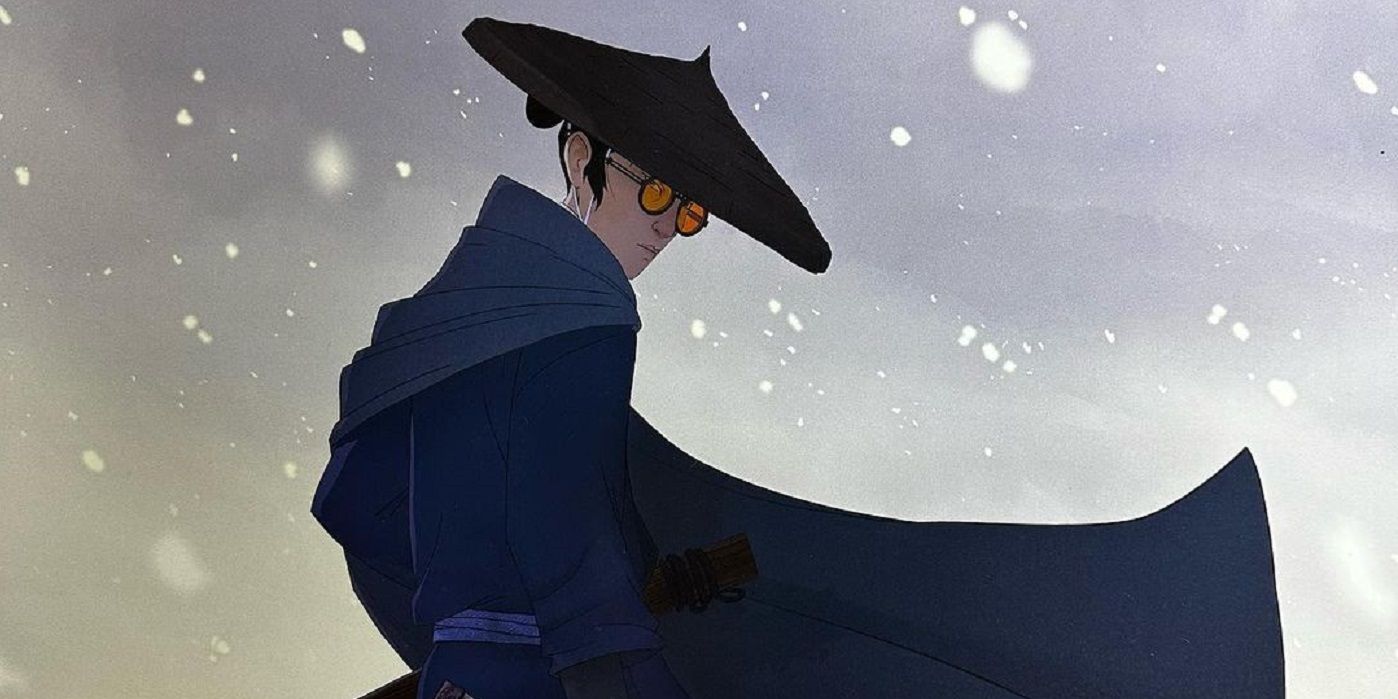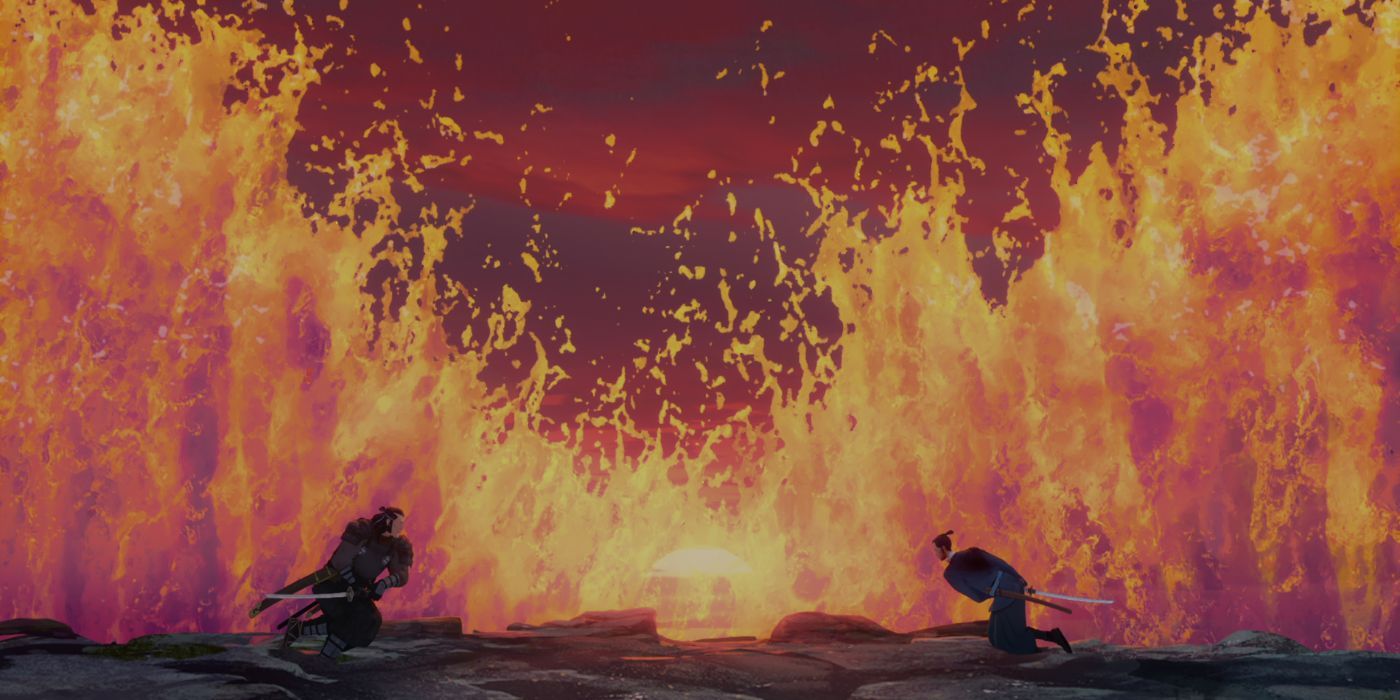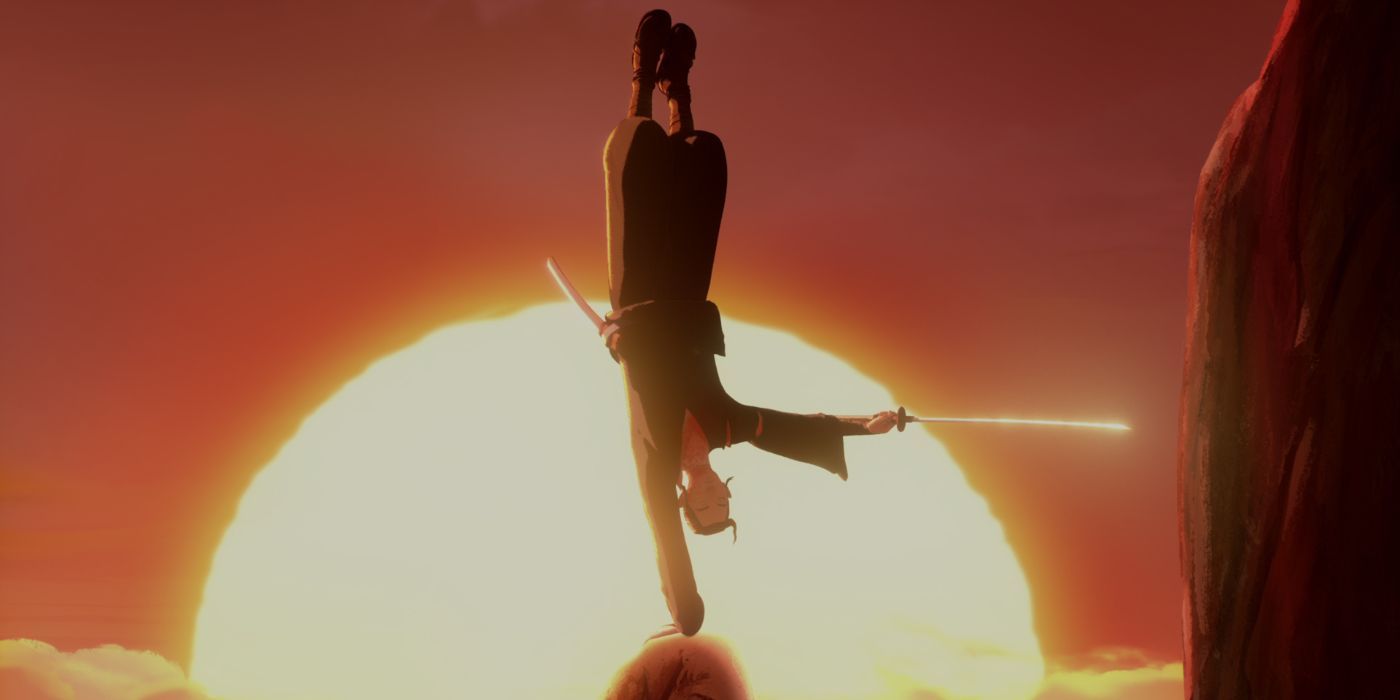You can tell in every minute of Blue Eye Samuraithat husband and wife duo Michael Green and Amber Noizumi have a vast knowledge of and passion for samurai films. The confidence and excitement radiate on screen throughout the first season's eight episodes. Blue Eye Samurai has echoes of Toshiya Fujita's jidaigeki film Lady Snowblood, Akira Kurosawa's revered masterpiece Seven Samurai, and more recent additions to the genre like Takashi Miike's 13 Assassins.
Not only does this team effectively pay tribute to Eastern cinema, but they also have a clear admiration for Western interpretations as well, namely Quentin Tarantino's Kill Bill. So many movies and TV shows have tried to pay tribute to the aforementioned — for example, the use of the song “Battle Without Honor or Humanity,” a piece of music that was brilliantly injected into the movie — only to typically fail. Blue Eye Samurai avoids this, and it's because of the series' particular boldness that it succeeds in paying tribute to what came before.
What Is 'Blue Eye Samurai' About?
Blue Eye Samurai is set in 17th-century Japan (also known as the Edo period) and has been described as a cross between Kill Bill, and oddly enough, the 1983 Barbra Streisand film Yentl. During this time in the country’s history, nobody was allowed in or out, especially anybody who was not of Japanese descent. This has made the series’ heroine, Mizu (voiced by Maya Erskine) an outcast. As the daughter of a Japanese woman and a cruel white man named Abijah Fowler (voiced by Kenneth Branagh), Mizu’s very existence puts a target on her back.
Vowing revenge on those who have wronged her and her mother, Mizu disguises herself as a male samurai and embarks on a brutal and bloody path of vengeance. Along the way, she meets new faces, including the naive but lovable aspiring teen samurai Ringo (voiced by Masi Oka) who was born with no hands, and Taigen (voiced by Darren Barnett) a handsome and revered samurai who forms an unlikely connection with Mizu.
'Blue Eye Samurai' Features a Fresh and Unique Animation Style
One of the first things that stands out about Blue Eye Samurai is its vibrant and distinct animation style. It's like a mixture of Genndy Tartakovsky’s Samurai Jack with Arcane yet still something we haven’t seen on TV before. Not only does it perfectly fit the tone of the series, but it makes the series’ action that much more exciting. The fight choreography and action are among some of the best setpieces you’ll see on TV all year (live-action or animated), fluid and paired perfectly with the animation. There are samurai sword fights, epic battle sequences, and training montages, all of which are consistently exciting. It's easy to become lost in the spectacle of it all, even for viewers who aren’t as into animation.
The environments are never boring or tedious as there’s always something visually interesting happening on the screen. Blue Eye Samurai boldly takes full advantage of its TV-MA rating. The violence is brutal, full of blood splatter, decapitations, and limbs being cut off. While it has become common practice for certain adult animated titles to use their mature rating as a gimmick, acting as if showing animated sexual content is something nobody has seen before, or trying to get the audience to giggle at cartoons cursing, everything in Blue Eye Samurai feels warranted and stays true to the series’ overall vision. Western adult animation has been on an exciting upswing in recent years, as it continues to branch out from just comedy as series such as Invincible, Castlevania, Primal, Arcane, and The Legend of Vox Machinahave proven. Blue Eye Samurai can now also be added to this exciting list as one of the best new animated shows of 2023.
'Blue Eye Samurai' Works Best When It's Being Ambitious
Having worked on films like Blade Runner 2049 and Logan, Green has proven himself as more than capable of creating an epic scope, and he does it again with Blue Eye Samurai alongside Noizumi. The episodes all run at an exceptional and brisk pace, but the storytelling is never rushed. This is a fully realized story, with clear plans for more. With a sprawling cast and world, it could have been very easy for Blue Eye Samurai to be overcrowded, but it successfully balances all of its storylines without feeling overwhelming. However, the series' crowning achievement is its fifth episode, titled “The Tale of the Ronin and the Bride,” which delivers some clear and satisfying backstories to Mizu while also getting creative in its story execution, being told in various timelines as well as through a Bunraku puppet show. Oftentimes times telling a story in a nonlinear format can become tedious or confusing, let alone in the middle of an eight-episode series, but Blue Eye Samurai pulls it off beautifully.
Blue Eye Samurai additionally boasts a star-studded cast including the previously mentioned Maya Erskine and Kenneth Branagh alongside George Takei, Stephanie Hsu, Ming-Na Wen, Randall Park, and Brenda Song. Erskine is a natural fit in the role of Mizu, with her personality and charisma translating exceptionally well in animation. However, the series also works when it is casting some of its talent against type, including having Park voicing Heiji Shindo a slimy and untrustworthy tradesman who works alongside Abijah Fowler, or having Masi Oka play an oafish and lovable but perhaps inexperienced teenager in Ringo.
Green and Noizumi have created a winning animated series that lives up to its promise, giving viewers an exciting new world to explore and characters to become attached to. From its breathtaking action to its near-flawless animation, it's a rarity to see a series that is so confident with itself in only its first season. From the opening moments, viewers are immediately sucked in and will immediately be left wanting more as soon as the credits roll on the finale.
Rating: A
The Big Picture
- Blue Eye Samurai pays tribute to samurai cinema, effectively blending elements of films like Seven Samurai and Kill Bill with its own unique style and boldness.
- The animation style of Blue Eye Samurai is fresh and visually striking, combining elements of Samurai Jack and Arcane. The action sequences are exceptionally well-choreographed and exciting, and the mature content is handled with purpose and stays true to the series' vision.
- The series shines when it takes ambitious storytelling approaches, such as the nonlinear narrative in the fifth episode.
All eight episodes of Blue Eye Samurai are available to stream on Netflix starting on November 3.



Comments
Post a Comment